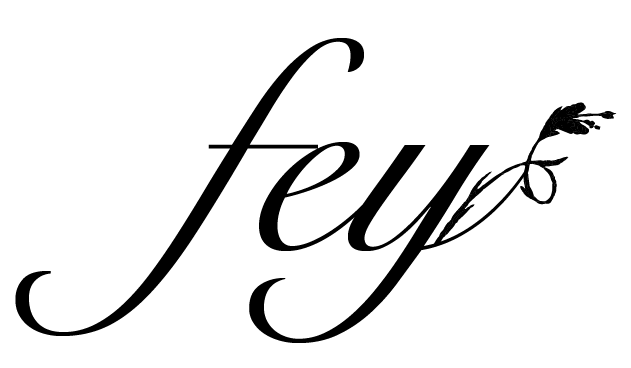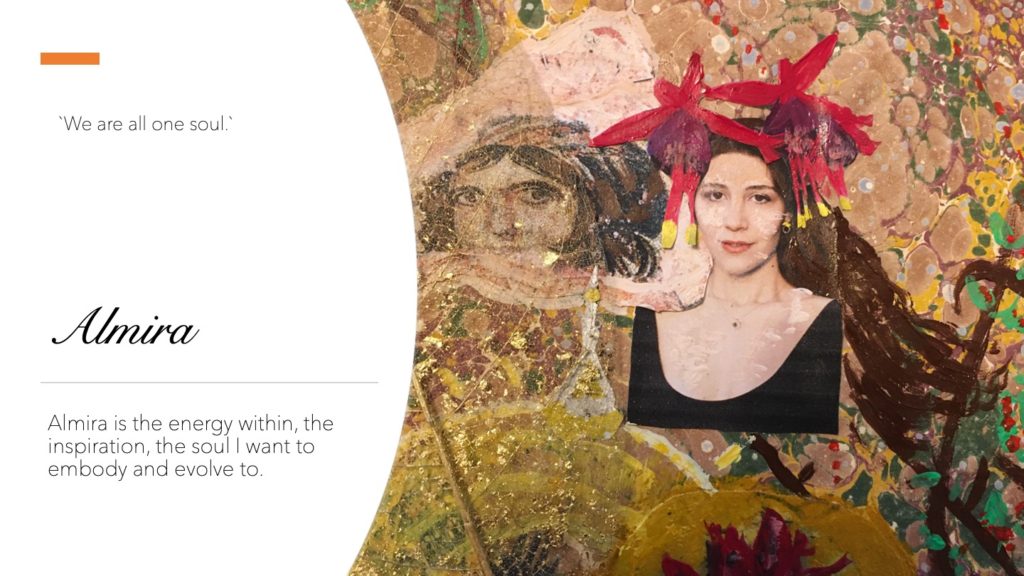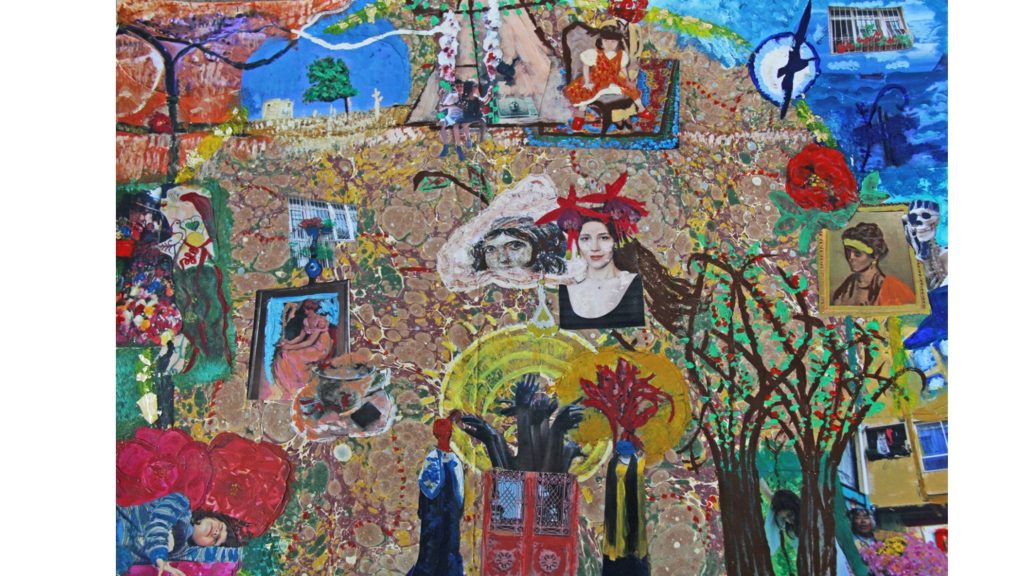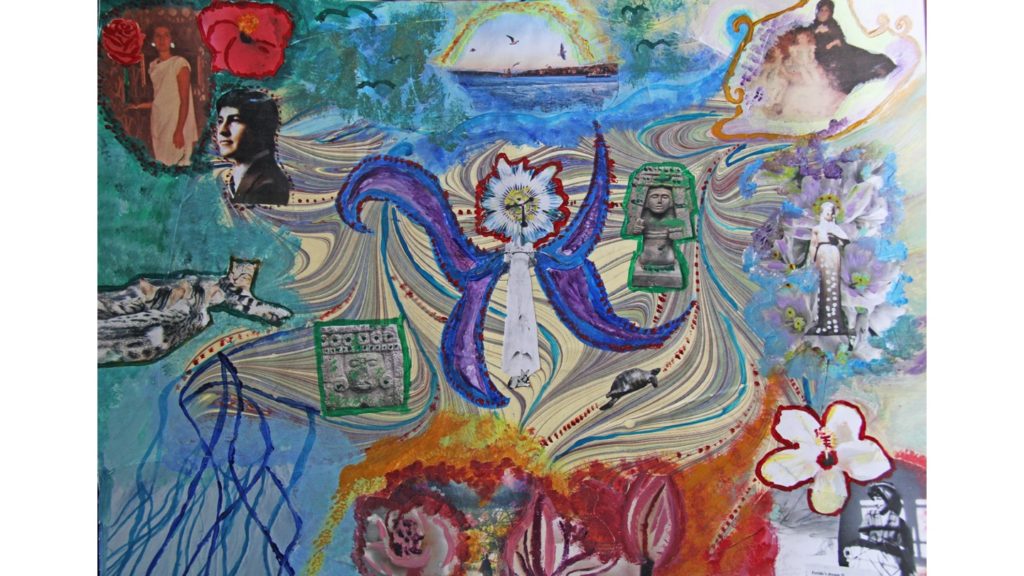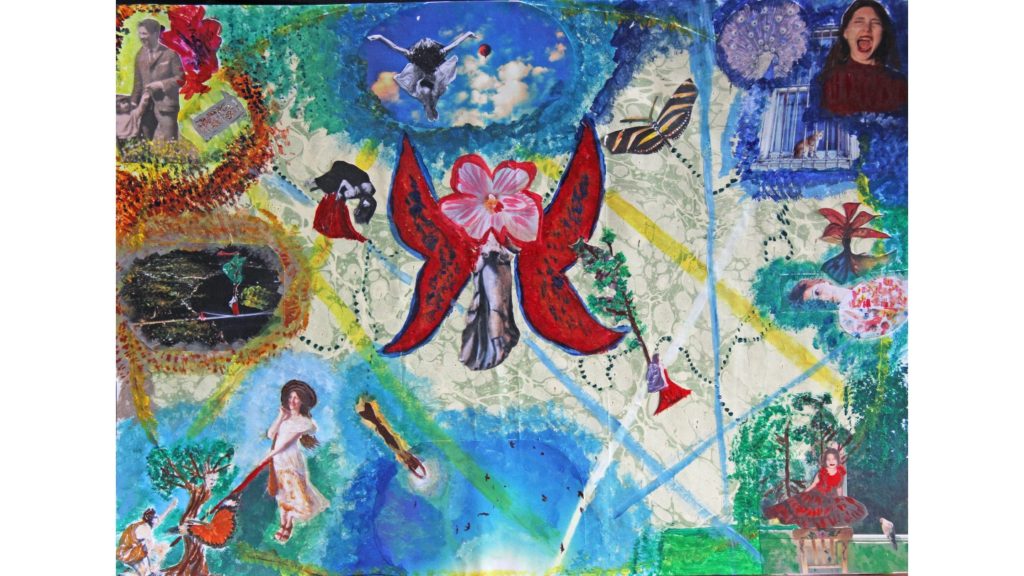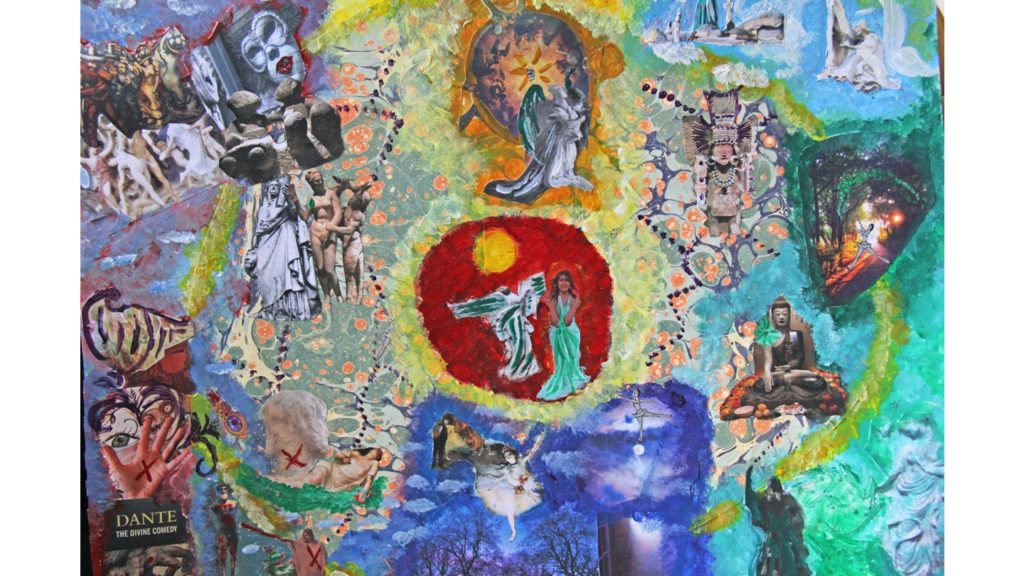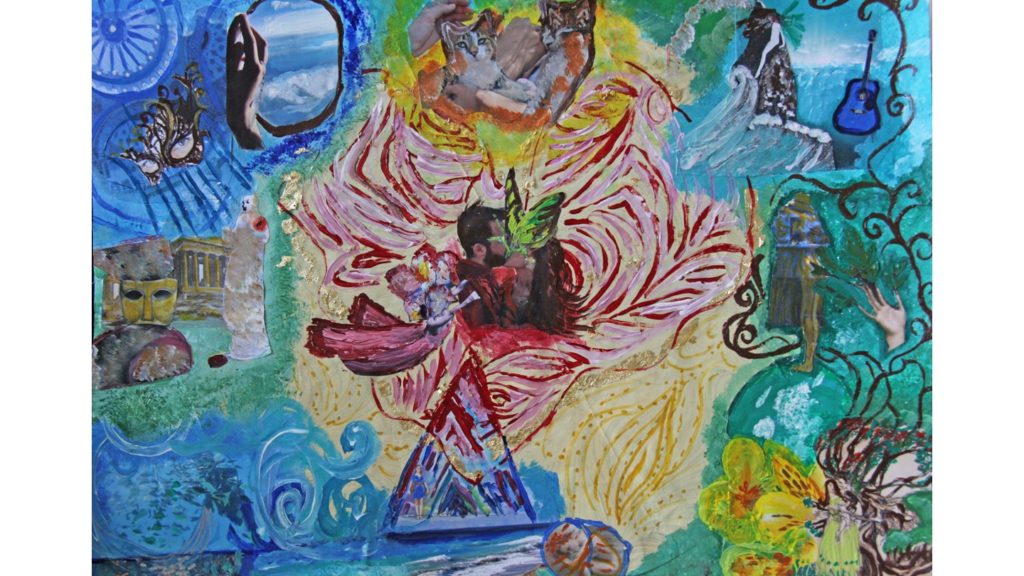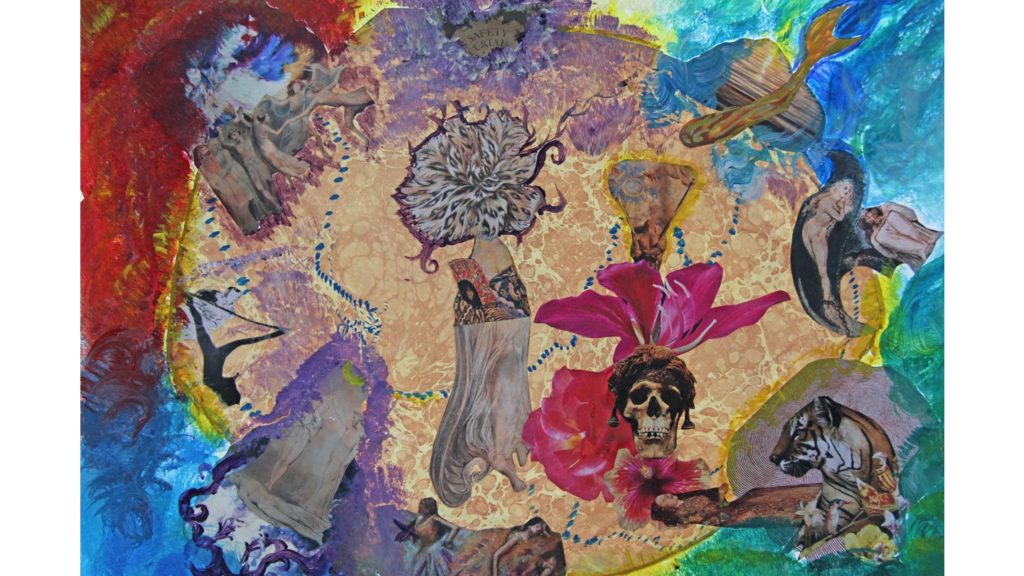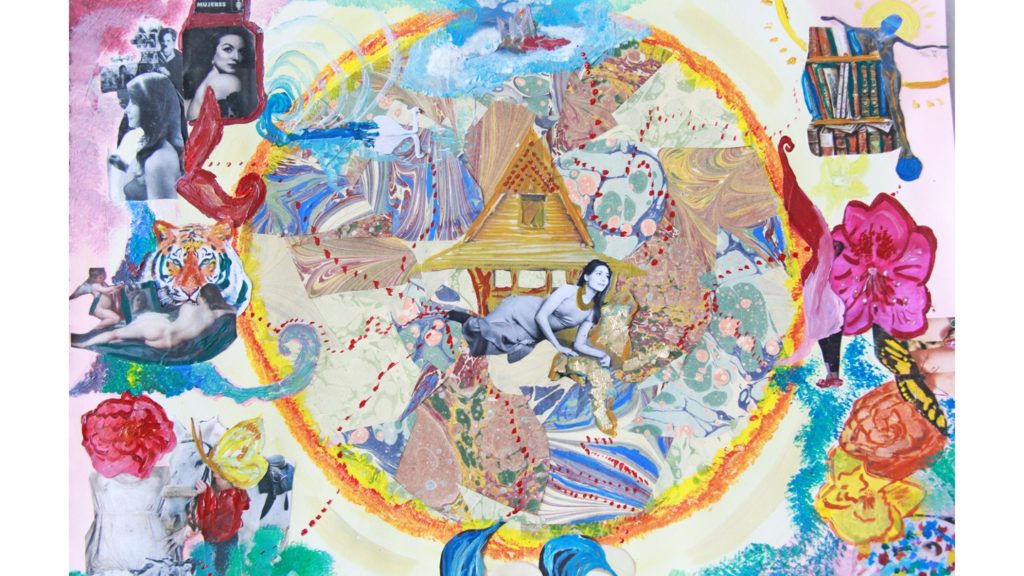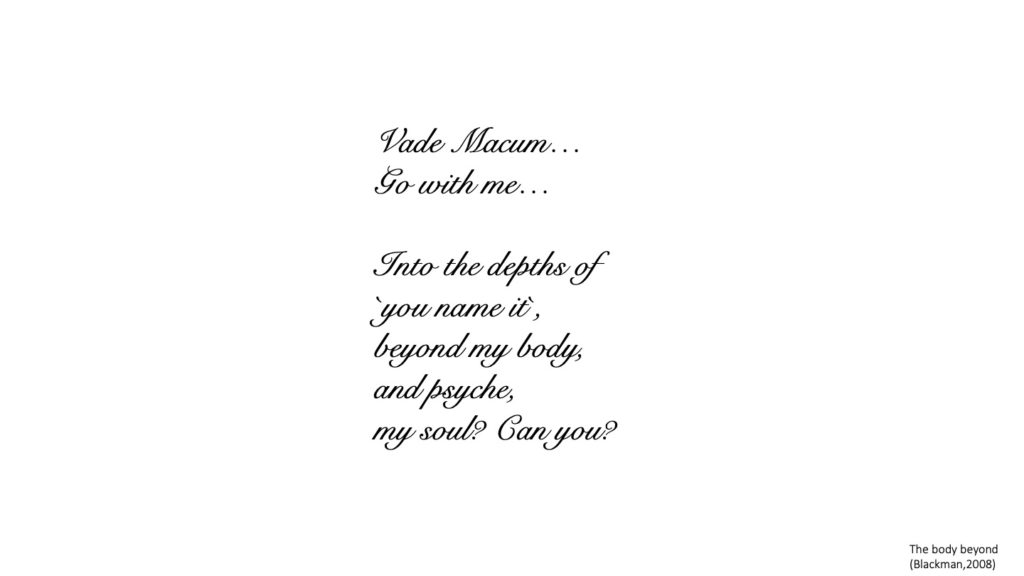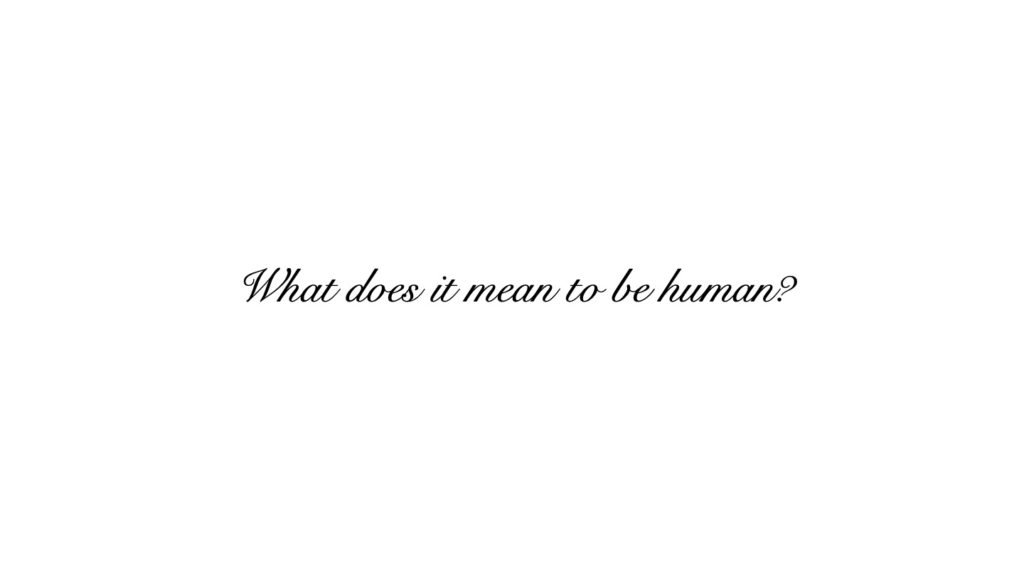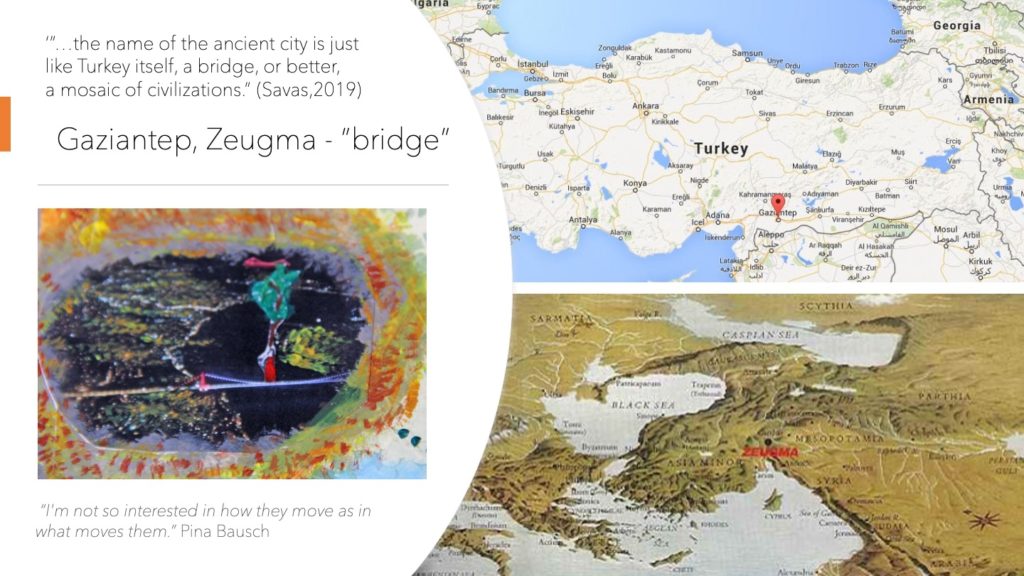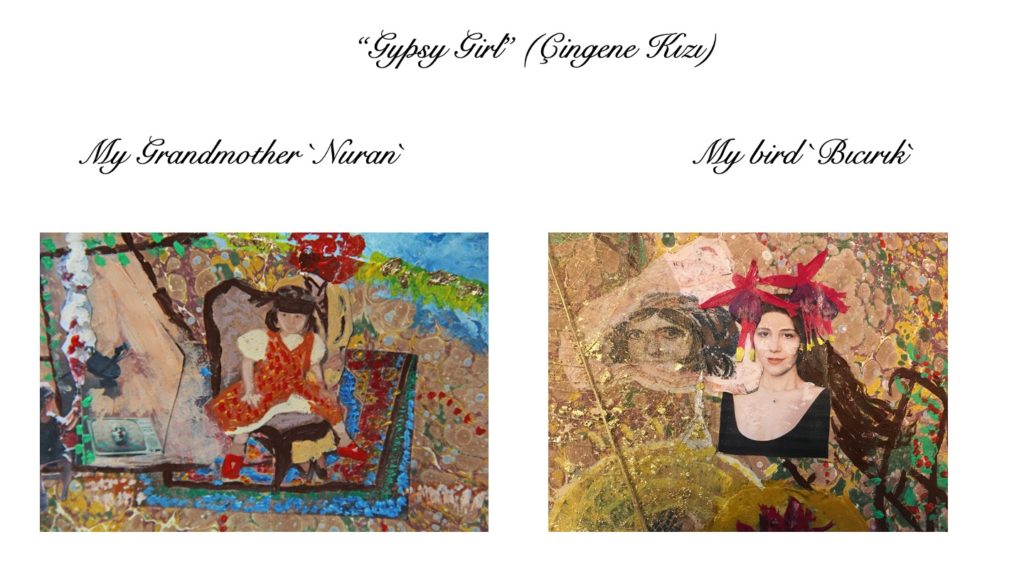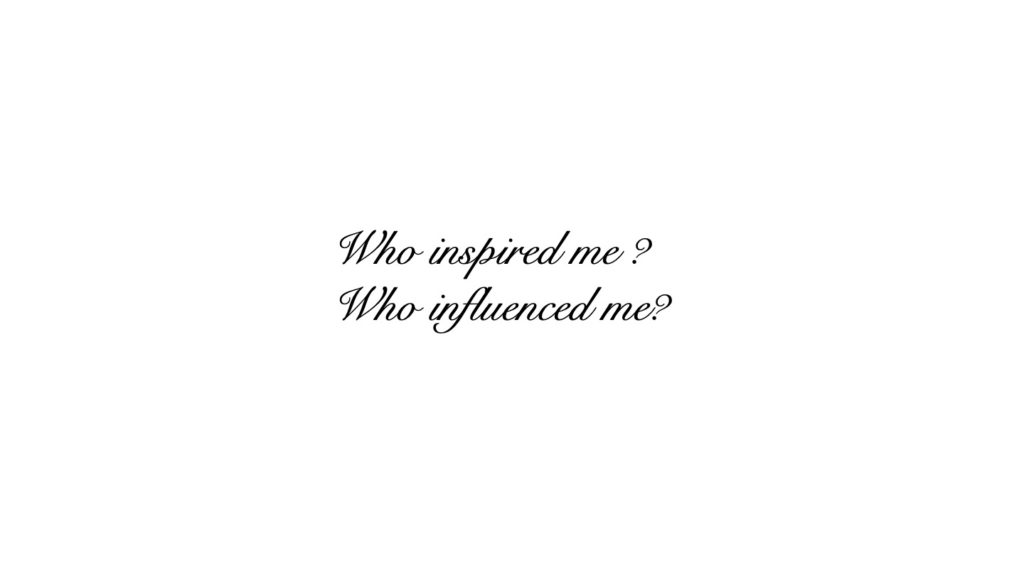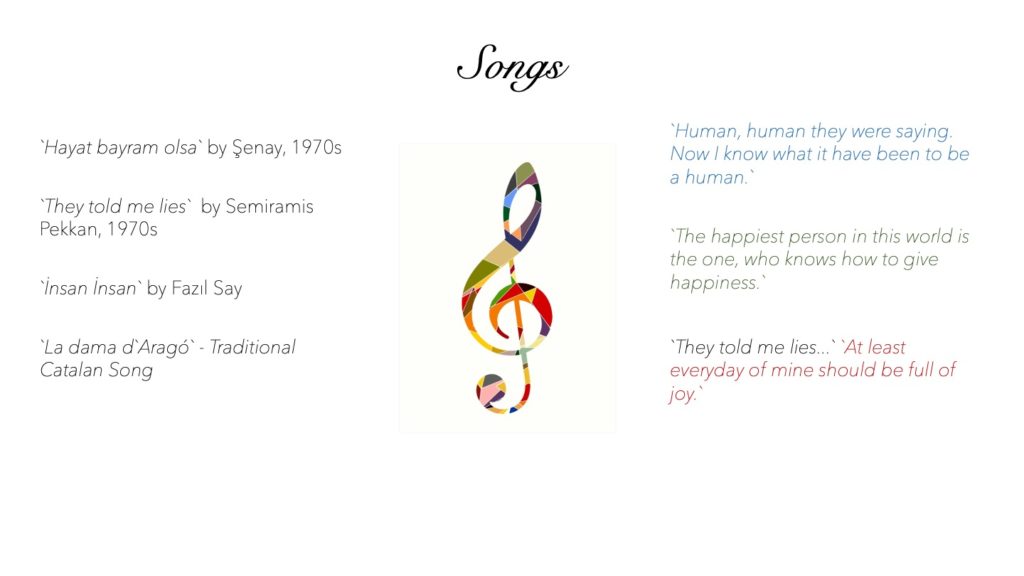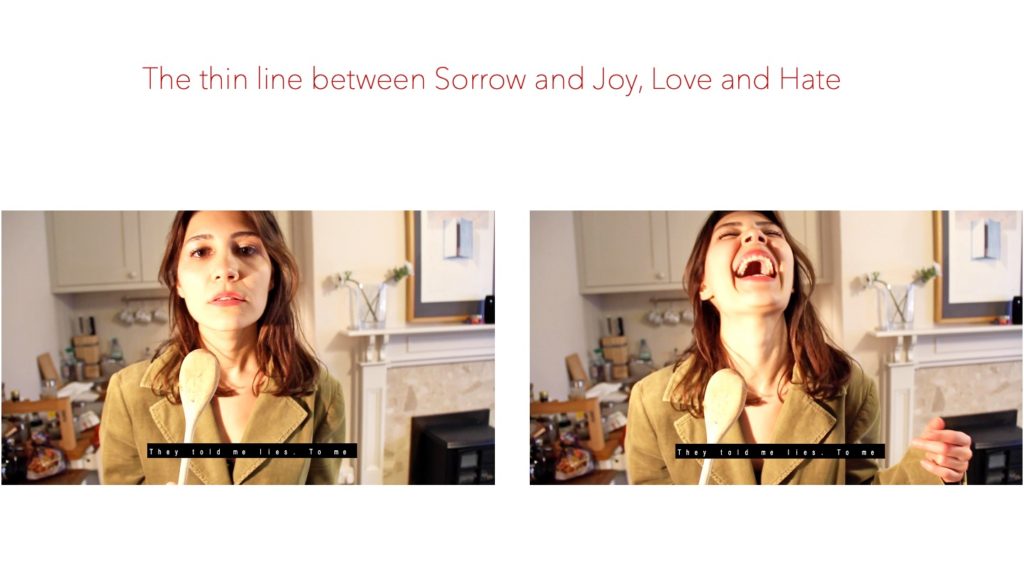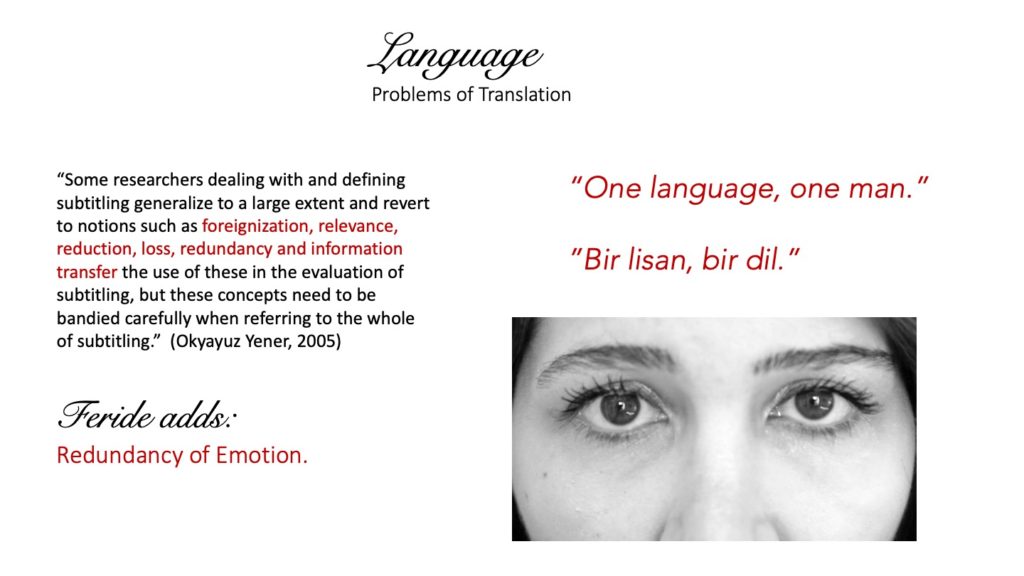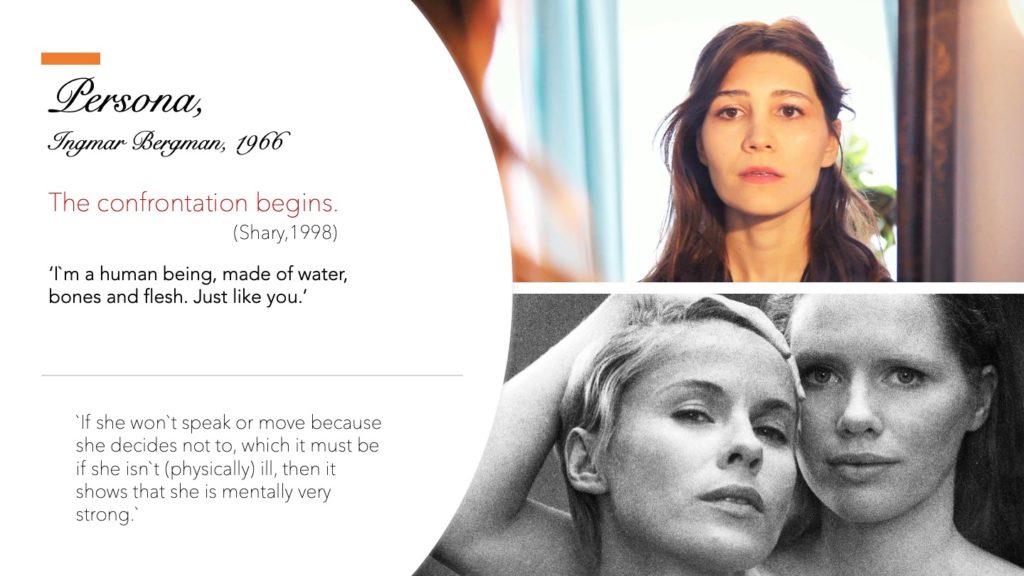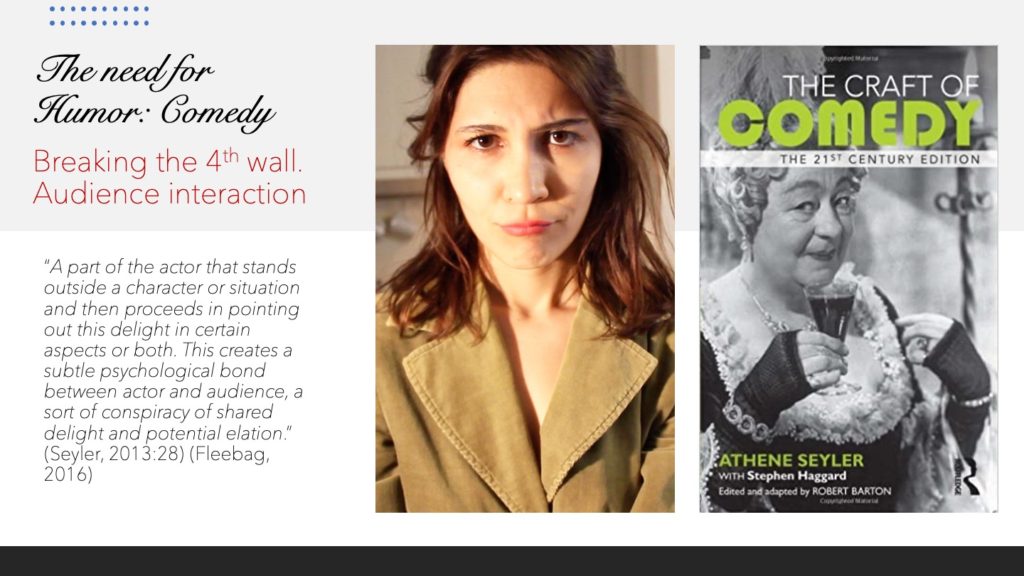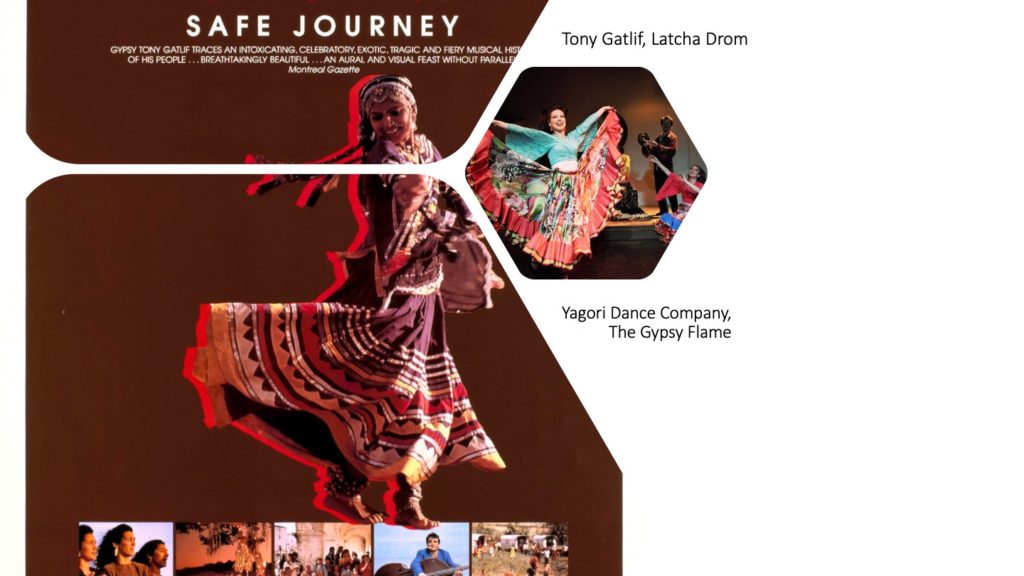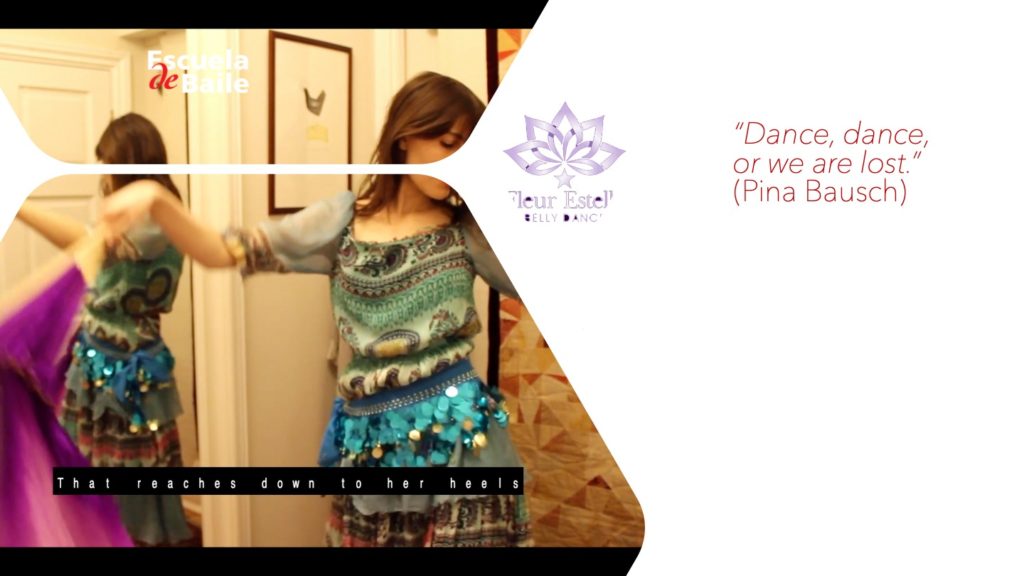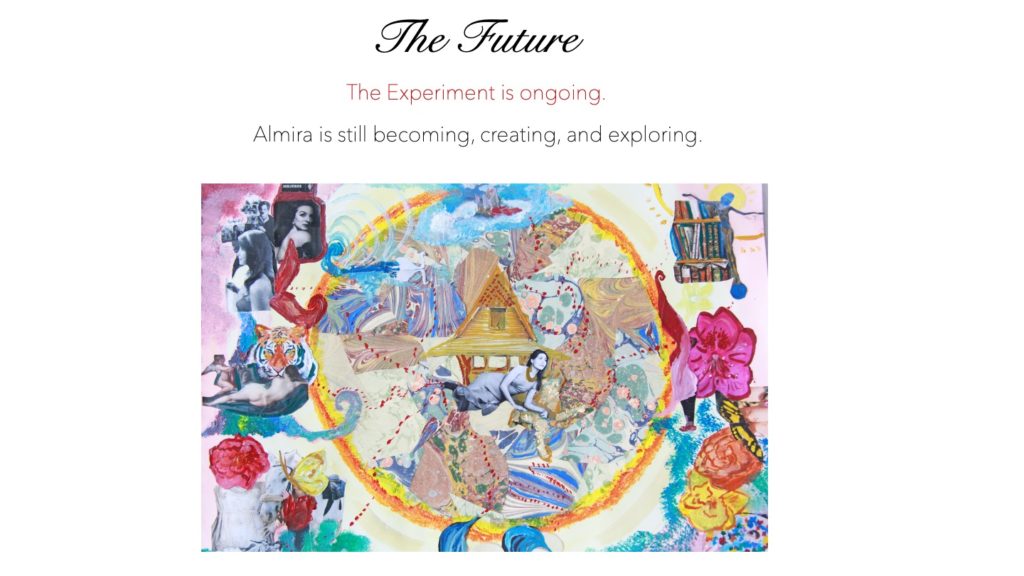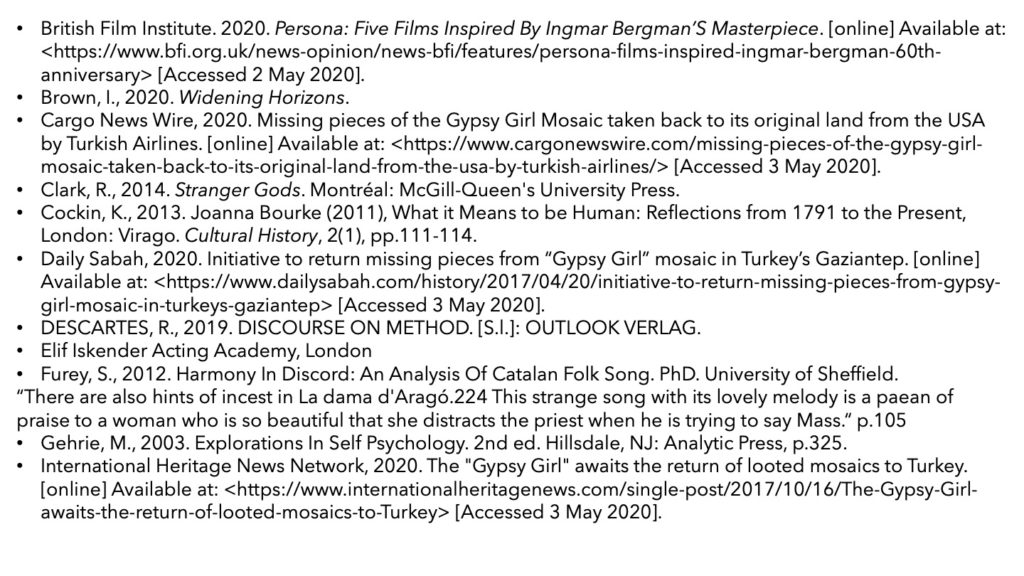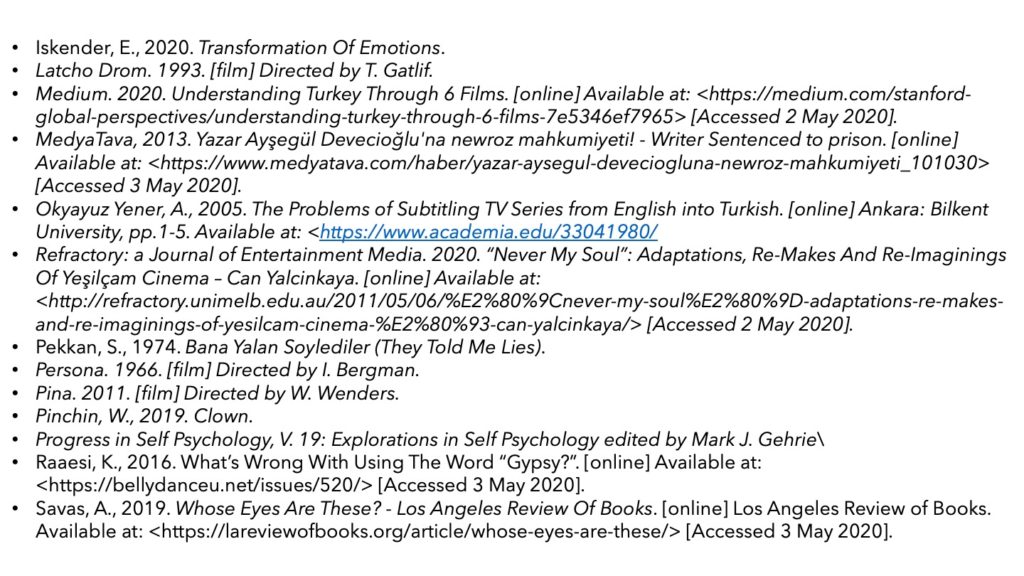What does it mean to be human?
Through the eyes of ‘Almira’
Vade mecum. Go with me into the depths of ‘you name it’, somewhere beyond my body and mind, my persona, my character, my possessions of identity and embodiments. What is it called? Can I call it ‘the soul’? Can I not fall into romanticism and the fantasy of the idea of having a soul, and remain as an explorer?
I have planted the seed of Almira inside of me, and through the process of creating through Almira’s eyes, I happened to find myself going into the depths of my existence. I have become the object and subject simultaneously. The main problem of this very stage of my exploration is the difficulty of experimenting on myself, as I am a human with “possessions that can be formulated as the identity of the ego-personality with a complex” (Jung, 122). However, despite this fact, my current attempt was not to provide an empirical theory, yet show the potential of my research through mixed forms of art, where my psyche is the field of exploration.
Calling myself ‘Almira’ and using fiction elements on my biographical journey helped this process to remain as truthful as it can be, as it let me ‘get out of myself’ and be able to become conscious.
“Essentially, the mask opens up the actor to the space around him. It puts him in a state of discovery, of openness, of freedom to receive. It allows him to watch, to hear, to feel, to touch elementary things with a freshness of beginnings. You take on the neutral mask as you might take on a character, with the difference that there is no character, only a neutral generic being (Roy, 2006, Gordon, 2006:38).”
In other words, putting a mask on top of my self let me become aware of my masks, and behavioural patterns, and realise that my body is ‘one yet many’ (Blackman, 2012: 1-2). We are homo sapiens, social animals, who have multiple layers that are affected by our upbringing and life experiences, which form our persona. As our focus of attention changes, our voice and physicality change (Iskender, 2020), and we embody ‘the layer’ of the persona, where the embodiment is ‘the surface’ of our existence.
Observing my form
According to Foucault, we are more authentic, becoming what we dreamed of, yet ‘identity is the crisis’ (Milchmen and Rosenburg 2005, Foucault 1979). In this project, my body was the exploration field, where I observed myself through ‘performance’. Noting ‘my body in movement’ was necessary for me to increase awareness on ‘the way my body moves when expressing emotions and speaking thoughts’. While trying to embody other personas than myself; Almira, the mother, and grandmother figure in the text, I have realised that the tensions I have been carrying within, were the blockages for me to find the authentic persona and form different characters. I have also come to a realisation that I, in the circumstances of myself ‘Feride’, in order to find the most authentic version of myself, must be in control of my psycho-physical organism. Thus, my training of performance shall require more practice, and to begin with directive relaxation to dissipate blocks and release emotion held in particular places.
“Our emotions are not fixed responses, but the result of millions of years of evolutionary processes that are still ongoing” (Whatt Smith, 2016).
Observing my emotions throughout this project (October 2019 – current day), and building a relationship with how these emotions occur through empirical knowledge, helped me to ease the process of putting my ‘ego’ on the side. So to say, one must put the existence of persona and ego on the side to be able to embody the ‘character’ (Iskender, 2020). In this formation, the self still exists, yet changes its persona (Jung, 1990). However, I must criticise my performance after observing my moving, speaking, and breathing within the project, as I did not succeed the process of putting my personas on the side, yet ‘I have succeeded to become aware of them’. The main problem of the performance occurs in ‘the voice’, as it is a product of ‘social, economic and cultural circumstances’ (Collett, 2019). Asking the question ‘why I speak the way I speak now’ (Collett, 2019), and observing its form helped me realise that I cannot embody a new form, without ‘putting my form on the side’ (Iskender 2020).
Actor/Performer, who is a detective of its own psyche, shall be on the right path of ‘truth’ by consciously stimulating the process that generally takes place unconsciously (Brown 2019, Iskender 2020, Strasberg 1997). In some parts of the project, while creating collages, writing, painting, drawing, recording and filming, I have unconsciously, yet instinctively recalled the circumstances, physical and personal surrounding and intensely emotional experiences from my past, which made me aware of my personal history and ‘how I operate’ today. As my acting tutor, Dr Elif Iskender once referred ‘My reactions during the performance are valuable when I am an unconscious observer’; meaning that when my psycho-physical self embodies without ‘thinking about the embodiment’, then the reaction ‘truly’ exists just like in real life.
My Ideal form
My psycho-physical form has its own limits within time and space. However, as it is in the Ideals world of Plato, my ideal form can be limitless (Iskender, 2020; Plato, 2007: 189-192).
The process of ‘Almira’ has grown as I produced ideas, and as I used my thoughts and created with them, my designs have evolved, and they have become closer to find their own form through practice. As I put my ideas in action, as my body started experiencing those ideas through performance, the ‘bitter’ transformation begun. I would like to use the word ‘bitter’, as I got closer to myself, the more imperfect and uncontrolled I observed, I was.
I would partly like to treat this experience as a case study as the observant, and the observer: My hormones and things I consume that produce my emotions, and form behavioural patterns, and those patterns that arouse through different events finding its roots in my childhood. When looking into the unconscious circle of events, one must emphasise ‘repetitions’ that are universal. As we dive deeper into our unconsciousness, pass through our history of upbringing, the history of humankind and ‘the archetypes’ come on to the surface (Jung, 1990 ). However, in this project, the emphasis of my exploration was on my current embodiments, blockages and emotional and behavioural habits. The second stage is ‘to accept’ them (Iskender 2020), accept that I am ‘imperfect’, as if I ‘accept’, then I will be eligible to come to the stage of de-constructing my patterns. As bio-mechanical thinking is limited, the world of ideas (Plato) serve as a tool for one to comprehend ‘what a body can do’ (Blackman, 2008). Once I come to that stage, the next step would be recognising ‘the collective unconscious’ and exploring the dominant ‘archetypes’ that are embedded on my current self. In other words, what Jung calls ‘archetypes’ is models of people, behaviours or personalities. My further research and exploration through performance and arts shall aim to reach to the level of diving deeper into unconsciousness, and exploring how to de-construct and construct, how can I come closer to embodying ‘my ideal self’, and how can I create and embody other personas through my practice of ‘acting’.
I would like to argue that the beginning lies in consciousness. If we treat the human body as a system of organs, the process of transformation must have its own network, yet we require ideas to create (Iskender 2020, Plato 2007).
I have planted the seeds of Almira in my head, by expressing my ideas through words, by having a conversation with myself:
“Almira is my soul, trapped, no not trapped, living in this body of mine. Trying to reveal itself through the constructions of myself. Almira is who I want to become, and I am already ‘her’, well sometimes.
Almira is not afraid to connect to human beings, living creatures; I mean the ones that have been ignored… Everyone, no matter vulnerable or strong.
She is brutally honest and looking for justice.
She can convince the ones in power to do good, without hurting herself.
Almira can control her feelings, can empathically, psychologically, embody other souls.
She is joyful, but one thing, she needs to let go and accept is her ‘princess’ side. As she recently came to a realisation that her princess self is a construction and she must let go. And maybe there will be other aspects to re-form, as she dives deeper into her psyche.
Be calm, objective, and real. Try. Do.
Almira, my love, I will help you to be free and get out.
Maybe I was her when I was a child, and now I have to learn how to be Almira with responsibility without losing the joy and the rawness, real self of Almira.
Reconnect.
Vibrate to your love, the ones around you, and the wholeness. Don’t limit your existence by the expression of space and time.
Can this be a part of your mission? The mission of deconstruction, construction and freedom of embodiment. Almira in Feride. Lots of love, Feride
(20th March 2020)”
As long as the world of my ideas exists (Plato, 2007), my ideal form can grow. The more I practice consciousness and unbinding my emotional patterns that are carried in my body, the more I can open the doors of transformation (Blake, 1994:57), and become capable of forming my own patterns. ‘If the doors of perception were cleansed, everything would appear to man as it is, infinite’ (Blake, 1994:57).
However, one must bear in mind, in the 21st century, where the consumption of media is inevitable, it is highly challenging to remain self-disciplined and controlled, and have the pure ability to choose what we consume in every way (food, music, film, tv, people…). Thus, psychologically speaking, ‘the matter is complicated’ (Jung, 2007).
I, therefore, am not capable of claiming to produce theories, but only express my exploration through the freedom that art gives.
Collaboration
I would like to thank all my collaborators, who have influenced and inspired my journey of existence and the journey of Almira, the greats, who have let me have a dialogue with themselves through their sharing of practices. As I have reached the level of ‘awareness’, this is the beginning of a new journey, my research and exploration through my methods of art and acting/performing shall continue to grow. My investigation will continue diving deeper into the psyche, attempting to reveal the existence of the essence of the self and the presence beyond the essence that is embedded within our psycho-physical organisms. We shall ‘become’ and ‘transform’.
This project found its form during Covid-19 and made me become aware that ‘collaboration’ does not require physical presence, ‘collaboration’ can exist internally by having a dialogue with others sharing of practices, theories and ideas. I would also like to thank Rose Bruford College of Theatre and Performance Arts for giving me the opportunity to use the word ‘I’, and let me use myself as ‘the subject’ and ‘the observer’ in the academic world.
Bibliography
- Lee Strasberg: The Method Man. 1997. Directed by C. Beaven.
- Blackman, L., 2008. The Body: The Key Concepts. Oxford, New York: Berg.
- Blake, W., 1997. The Marriage of Heaven and Hell. New York: Dover Publications.
- Brown, I., 2019. Widening Horizons, Rose Bruford College of Theatre and Performance Arts.
- Collett, N., 2019. Voice, Rose Bruford College of Theatre and Performance Arts.
- Iskender, D., 2020. Acting, London: Elif Iskender Academy of Acting.
- Jung, C., 1990. The Archetypes And The Collective Unconscious. 2nd ed. London: Routledge, pp.1- 150.
- Milchman, A. and Rosenberg, A., 2005. Michel Foucault: Crises and Problemizations. The Review of Politics, 67(2), pp.335-351.
- Plato, 2007. The Republic. 2nd ed. Penguin Group.
- Roy, D., 2016. Masks as a method: Meyerhold to Mnouchkine. Cogent Arts & Humanities, 3(1).
- Strasberg, L., 1950. Lee Strasberg: The Method Man.
- 2019, 2020. Vade Mecum, Rose Bruford College of Theatre and Performance Arts.
- Watt Smith, T., 2016. The Book Of Human Emotions: From Ambiguphobia To Umpty – 154 Words From Around The World And How We Feel. New York, Boston, London: Little Brown and Company.
